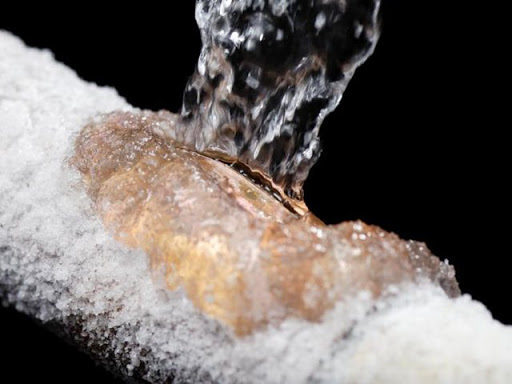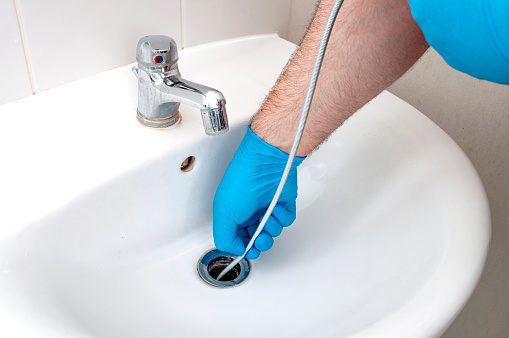An Leading Winterizing Techniques: 5 Ways to Protect Pipe Bursts
An Leading Winterizing Techniques: 5 Ways to Protect Pipe Bursts
Blog Article
Just how do you really feel on the subject of How to Prevent Frozen Pipes?

All homeowners who live in temperate climates need to do their best to winterize their pipelines. Failure to do so can mean disaster like icy, cracked, or ruptured pipelines.
Turn On the Faucets
When the temperature decreases and also it seems as if the cold temperature level will last, it will certainly aid to transform on your water both inside your home and outdoors. This will certainly keep the water flowing through your plumbing systems. You'll finish up wasting gallons of water this method.
Open Up Cupboard Doors Hiding Plumbing
When it's cool outside, it would be useful to open up closet doors that are camouflaging your pipelines. Doing this tiny trick can keep your pipelines warm and limit the potentially hazardous outcomes of freezing temperatures.
Take Time to Cover Exposed Water Lines
One easy and clever hack to heat up cold pipes is to wrap them with cozy towels. You can additionally utilize pre-soaked towels in hot water, simply don't fail to remember to use protective handwear covers to protect your hands from the heat.
Attempt a Hair Clothes Dryer or Warm Weapon
When your pipes are nearly freezing, your reliable hair clothes dryer or warm gun is a godsend. Bowling warm air straight into them may help if the hot towels do not aid dislodge any type of clearing up ice in your pipes. Do not utilize other objects that create direct fires like a blow torch. This can result in a bigger calamity that you can not control. You may wind up harmful your pipes while attempting to thaw the ice. And also in the long run, you may also wind up shedding your home. Be cautious!
Shut Off Water When Pipelines are Frozen
If you see that your pipes are entirely frozen or nearly nearing that stage, turn off the primary water shutoff right away. You will generally find this in your basement or utility room near the heating unit or the front wall closest to the street. Turn it off as soon as possible to stop additional damage.
Don't forget to shut exterior water sources, also, such as your hookup for the garden residence. Doing this will certainly prevent additional water from filling up your plumbing system. However, with more water, more ice will accumulate, which will eventually result in break pipelines. It is best to call a specialist plumber for an inspection if you are uncertain regarding the state of your pipes this winter season. Taking this proactive approach can save you hundreds of dollars out of commission.
All house owners that live in pleasant climates should do their ideal to winterize their pipelines. Failing to do so can mean disaster like icy, split, or burst pipes. If the warm towels do not help remove any type of working out ice in your pipelines, bowling hot air straight into them may assist. Transform off the main water valve right away if you see that your pipes are entirely icy or almost nearing that phase. With even more water, more ice will certainly load up, which will ultimately lead to break pipelines.
PREVENT YOUR PIPES FROM FREEZING THIS WINTER
A Leading Cause of Property Damage
When the weather is taking a deep nose dive into the cold dreary days, the risk of your pipes freezing and potentially bursting skyrockets. Unfortunately, during these cold dreary months, burst pipes are the most common denominator for property damage. The pipes that are most at the risk are those that are in areas where it is most cold in your home. For instance, pipes located in interior places such as basements, attics, and your garage. Unfortunately, that doesn’t mean that the pipes running through your cabinets or exterior walls can’t freeze. Good news, however, is that you can do things to help prevent pipes from freezing.
How to Prevent Pipes From Freezing
Once the temperature starts to drop during the winter, you should be taking the proper measures needed to ensure that your pipes stay warm and that there is circulation of water through them. Some steps that experts may recommend could go against your better judgement when it comes to saving water and heat. However, it would go without saying that when expenses are compared, damaged pipes could put a bigger dent in your wallet than a water bill.
What Can I Do?
Keep your garage door closed. This is very important, especially if you have water supply lines running through your garage. Open your kitchen and bathroom cabinets to allow warm air to circulate through them. Allow air circulation throughout your home. Keeping the interior doors open will once again allow the warm air to circulate inside your home. Ensure your thermostat is running the same temperature throughout the night and day. If you plan to be away from home during the cold months, set your temperature no lower than 55° F. This should provide enough heat to keep the pipes warm and prevent any remaining water inside the pipes from freezing. For more of a long-term solution, add insulation to attics, basement, and other crawl spaces around your home. By allowing your faucet to drip, it will alleviate pressure in the system. This is important because the pressure that is created between the blockage and the faucet can potentially cause the pipes to burst. Allowing the faucet to drip will prevent the pressure from building up, therefore keeping the pipes from bursting. Seal any cracks, openings, and crawl spaces around your home to prevent cold air from coming inside. This keeps your pipes-not to mention your home-warmer and less susceptible to issues caused by freezing temperatures. For the pipes in your home that are easily accessible, applying electrical tape to them might prevent them from freezing over. This is a quick fix, as you can apply the tape directly to the pipe. There are two options for heating tapes. One turns on and off by itself when it senses heat is needed. The other type of heating tape needs to be applied when heat is needed and removed when not necessary. If you have exposed pipes in your home, you can check this website to take a look at a few options that would be available at a shop near you.

I stumbled upon that piece on How to Prevent Frozen Pipes when doing research the web. Those who appreciated our blog entry kindly be sure to pass it around. Thank you for your time invested reading it.
Show Details Report this page